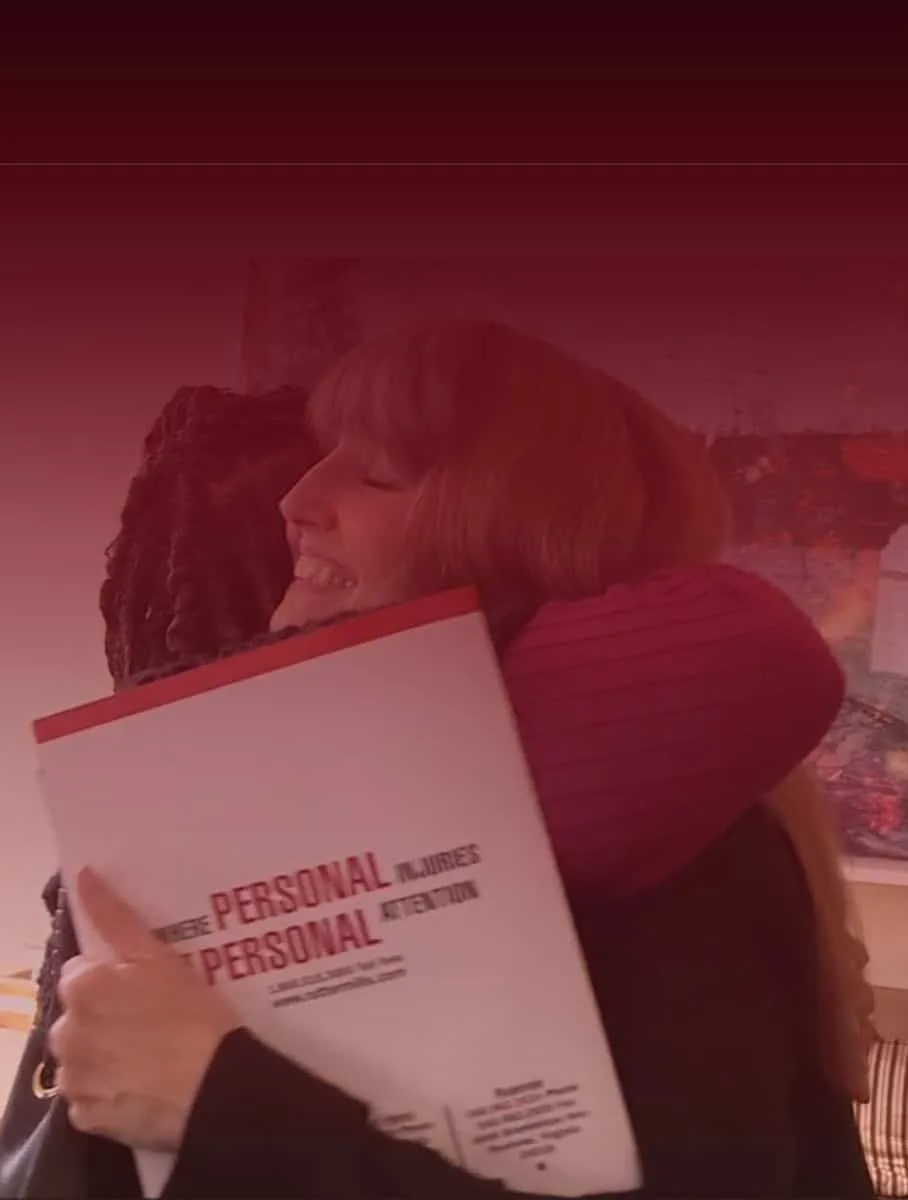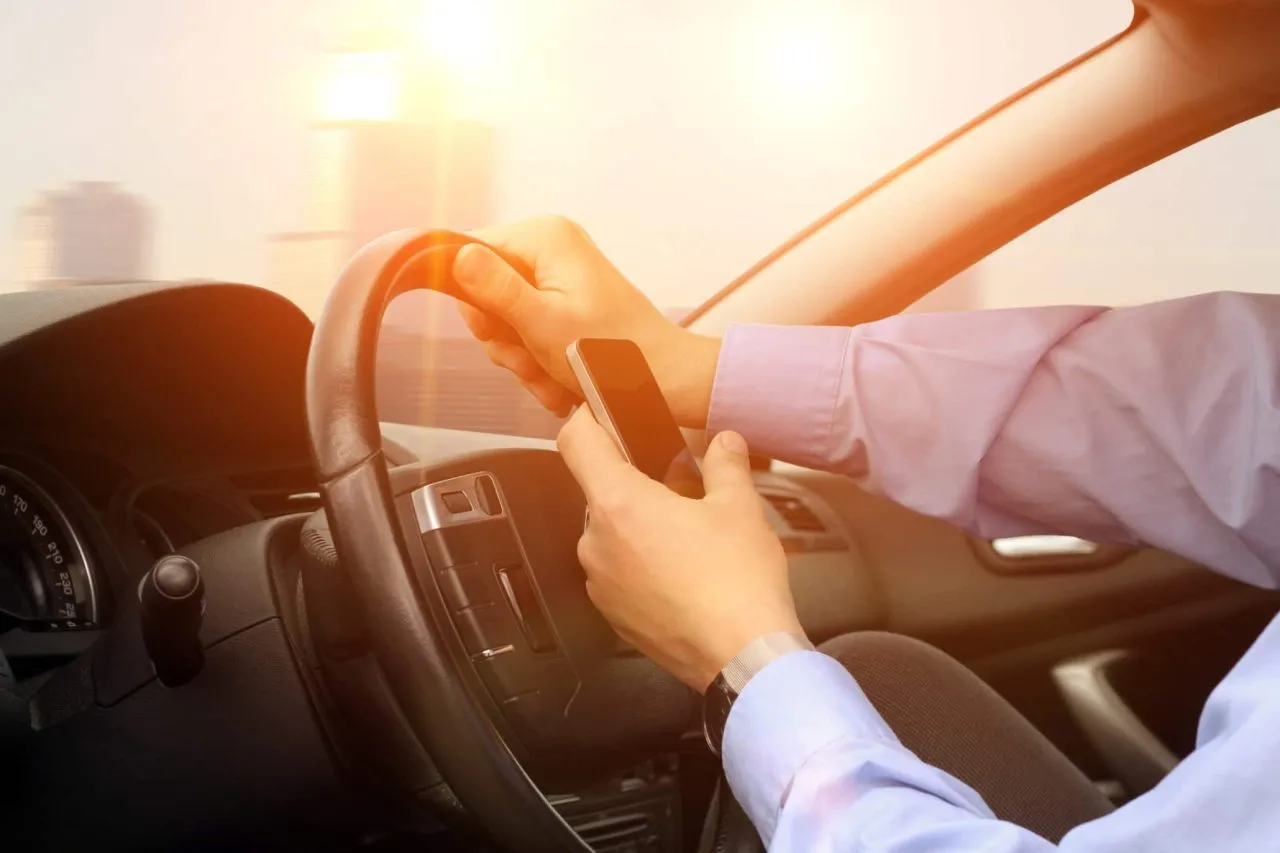
We’re Here for You
Contact Us for a Free Case Evaluation
Our team is ready to listen day or night – 7 days a week, so contact us now to see how we can help you on the road to recovery.

Since the first texting features came out in 1993 on a little Nokia cell phone, the cell phone industry has boomed. We are entranced by the box in our hands which made communication so easy for us in the last two decades.
Yet, with great promise came great danger. From this grand achievement in communications technology came the perilous existence of texting while driving (TWD). Outside of a few researchers, most of us didn’t foresee the perceived risk of cell phone usage. Now our roadways have become avenues of peril where drivers’ eyes, ears, and brains are distracted from the road.
Rutter Mills has seen an increase in cases caused by TWD. (In fact, 15% of reported accidents came from distracted driving in 2019!) Studies show how drivers fully acknowledge the dangers of distracted driving, yet continue using their phones at the wheel anyway. We can post warning signs along highways, but what does it really take for us to change behavior in the driver’s seat? Ruter Mills took a closer look at what distracted driving is and what we can do about it.
Knowing there’s a risk is not enough to get us to drive safely – our attitude (known as “inattentional blindness”) towards TWD is the greatest risk factor. Perhaps writing a quick message – “L8tr”, “OMG” or “OMW” – won’t hurt. It practically writes itself – it won’t affect your driving, right? But what we may see as a harmless text is not harmless at all. At 55 mph, 5 seconds with eyes on the screen is like driving the length of an entire football field blind.
The way we use phones has changed drastically, morphing from sparse voicemails in the 1990s (does anyone check those anymore?) to a hoard of text messages post-2000.
We were more prepared for the Covid-induced dependency on Zoom than we may have thought!
Statistics from 2014 to 2018 show upward trends in accident rates, with our hometowns of Virginia Beach, Norfolk, and Newport News generating some of the highest crash numbers in all of Virginia.
These crash rates not-so-ironically correspond with a nearly 20% jump in the use of Smartphones for the same period of time. Our dependence on Smartphones more than doubled during this period as well. Coincidence? The distraction and stimulation of Smartphones inarguably connect to higher crash rates, leading to the ultimate presumption: cell phones use while driving is intentional negligence towards the safety of others on the road.
Of course, none of us would see our defiance of road rules as intentional. (Would we?) After all, everybody texts while driving... But when does your attitude evolve from following the patterns of others to safeguarding each other? Read on to see our own suggestions and solutions for road safety.
Effective January 1, 2021 Virginia law prohibits drivers from holding cell phones or any other wireless communication devices while driving except in a driver emergency or the vehicle is lawfully parked or stopped. – dmv.virginia.gov
This is the mandate released by the DMV over a year ago as a means to stop the increased number of accidents. Notice the cryptic guidelines? “Holding devices while driving” excludes a lot of activity. While you can’t physically handle a phone while driving, you can still make calls and read the GPS. The lines are fuzzy between knowing when a person is finagling with texts and when they’re simply pressing START to navigate.
Guilty or innocent, you regardless don’t want to end up explaining to a policeman why you accidentally switched lanes in the Monitor-Merrimac tunnel or how you rear-ended a car on Mercury Boulevard.
The law has gotten enough scrutiny, so we’re not here to dissect it any further. In a nutshell, you cannot text or read texts while driving. You can check out our 1-minute read to get a little more clarity on precisely what is prohibited.
We DO want you to understand what is and isn’t a good idea. Manually inputting letters to your phone takes not only eyes away from the road but also hands away from the wheel. Not having either while you cut from two lanes to one at construction on Granby Avenue could make all the difference between being a safe driver…or being a threat. No one wants to be responsible for the damage of flying into a guardrail or hitting a pedestrian. No 5-second text message can justify that.

Summer is coming. As many of us head to the Outer Banks for vacation, we should all be aware of any differences in TWD bans across state borders. For now, in Virginia, the ban is on. Our attention spans might be shortened by our dependence on social media, but our attention to the road must be doubled in vigilance.
Bans might limit phone use, but what about crashes? The Insurance Institute for Highway Safety (IIHS) reported on studies that showed “strong highway safety laws coupled with well-publicized enforcement are a proven countermeasure for changing driver behavior.” This worked especially well for seatbelt and anti-alcohol use in the past.
More time for studies is needed to test out the effectiveness of banning TWD – yet we might be able to learn from history to curb phone-related accidents. As aforementioned, our attitudes towards risk are the central obstacle to safer driving habits. We can work towards correcting this root problem by using High Visibility Enforcement (HVE) such as through media, ads and events. As we said before, it’s difficult to judge how a driver is or isn’t using a phone. Let’s hope with the passage of time, greater attention to risk, and improvements in technology, we can better separate time we spend on the phone from the time we spend at the wheel.
There are times on the road when your cell phone can help you – like if you’ve had an accident. The time to have a phone in your hands is not while operating a car, but after you’ve gotten in a crash. A phone can be your lifeline to call the police and friends or family. If you believe that someone’s phone use caused your accident, there are ways of finding out.
Pull to a safe spot, then contact our Rutter Mills offices to learn how we get data from a liable driver’s phone or data core to prove their irresponsible phone use caused your crash.
There are a number of ways to protect yourself from the dangers of distracted driving, so we won’t go into too much detail. Let’s just reiterate how new tech in cars and phones is helping us out.
If you really can’t fight the itch to respond to that work email, Talk to Text is a great alternative to typing – by leaving your eyes on the road, it just might save your life.
It’s mid-drive and you remember you still need to pick up that last-minute birthday present…how do you get to Patrick Henry Mall, again? Your trusty AI companion is ready to listen. Keep your hands on the wheel and just ask Siri or Google to add a stop in your GPS.
Enough about fancy-tech. Sometimes, it pays to do things the old-fashioned way. Exiting at the next ramp on I-95 or pulling over to a safe parking spot eliminates all other distractions so you can fully focus on your text, your map, your kids in the back seat, or the snack in your lap!
A text can take just seconds of your life to type – but could ultimately take the life of another, if not your own. It costs nothing to be a force of positive change. Employers and educators can spread the word. Teens can influence their peers. Parents can be transparent with their kids and lead by example with safe driving practices. April is Distracted Driving Month where plenty of awareness is preached. Rutter Mills is taking full advantage of letting our community know what it means to drive safely this season so you won’t have to look for a distracted driving lawyer.
So let’s put our words into action. Eyes on the road when you go, but safely stop to text or call.
A Rutter Mills case is a serious case. It may mean you have been badly injured. It certainly means you have a lot on the line, and the resolution of your case will make a big difference to you, your family, and your life moving forward.
Contact Us for a Free Case Evaluation
Our team is ready to listen day or night – 7 days a week, so contact us now to see how we can help you on the road to recovery.
